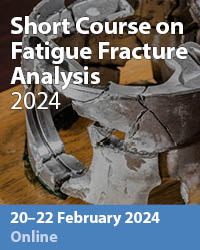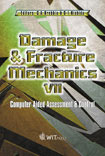Estimation Of Fatigue Crack Growth Retardation Due To Crack Branching
Price
Free (open access)
Transaction
Volume
37
Pages
Published
2002
Size
381 kb
Paper DOI
10.2495/DM020211
Copyright
WIT Press
Author(s)
D G Pavlou, N V Vlachakis, K A Kouroumbas & F G Pavlou
Abstract
Estimation of fatigue crack growth retardation due to crack branching D. G. Pavlou1, N. V. Vlachakis1, K. A. Kouroumbasl, F. G. Pavlou2 1Department of Mechanical Engineering, TEI Halkidas, Evoia, Greece. 2EL VAL SA., Hellenic Aluminum lndustiy, Athens-Lamia, Greece. Abstract Quantitative analysis is provided to estimate the reduction of fatigue crack growth rate due to overload crack branching. A recent mixed-mode fatigue crack growth model based on the dilatational component of the accumulated strain energy density near the crack tip is modified to quantify the retardation factor of crack growth rate following an overload. It is found that crack branching due to an overload results in considerable reduction of fatigue crack growth rate. The retardation factor estimated by the proposed methodology is correlated with test results for the 2090-T8E4 1 aluminum-lithium alloy indicating encouraging agreement. 1 Introduction Load excursions (e.g. single tensile overloads or variable amplitude loading histories) result in crack growth retardation or arrest [1]. However, the micromechanisms governing the retardation phenomena have not enough been understood. Up to now there are several interpretations, mainly based on: (a) crack closure due to residual plastic deformation in the vicinity of crack tip [2], (b) strain hardening of the material within the overload crack-tip plastic zone [3,4], (c) plastic blunting and subsequent resarpening of the crack-tip after the loading and the unloading part of the overload [5], d) fracture surface roughness which results in contact between the crack faces at non-zero loads and therefore in a locally reduced effective stress-intensity range [6,8] and e) crack branching or deviation of crack path due to a load excursion which results in a reduction of the driving force governing the following crack growth [9].
Keywords





